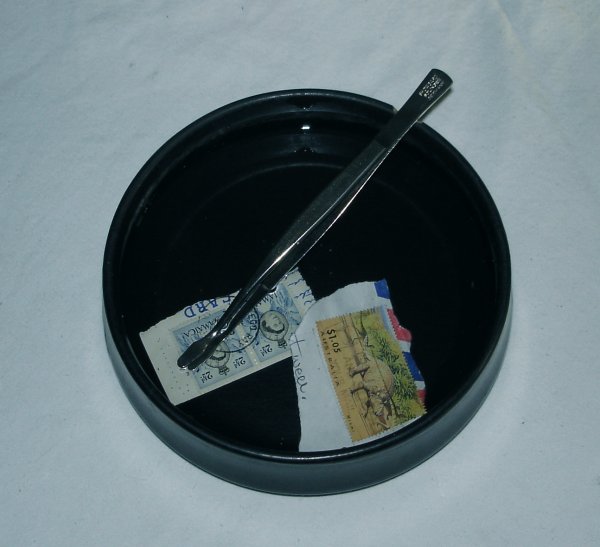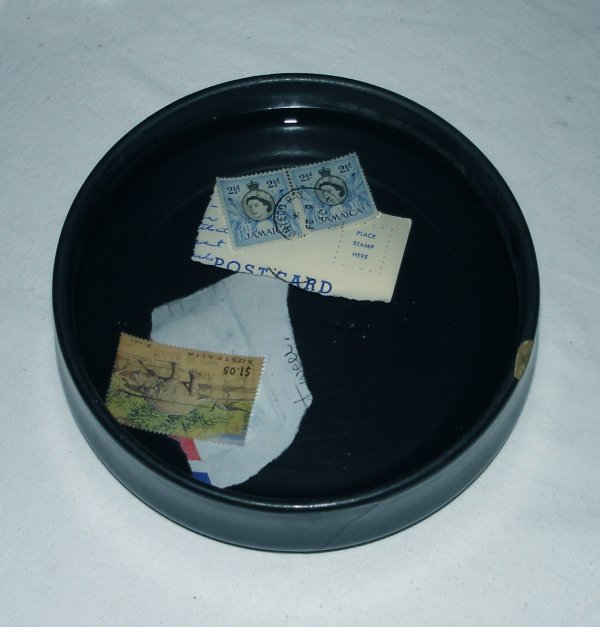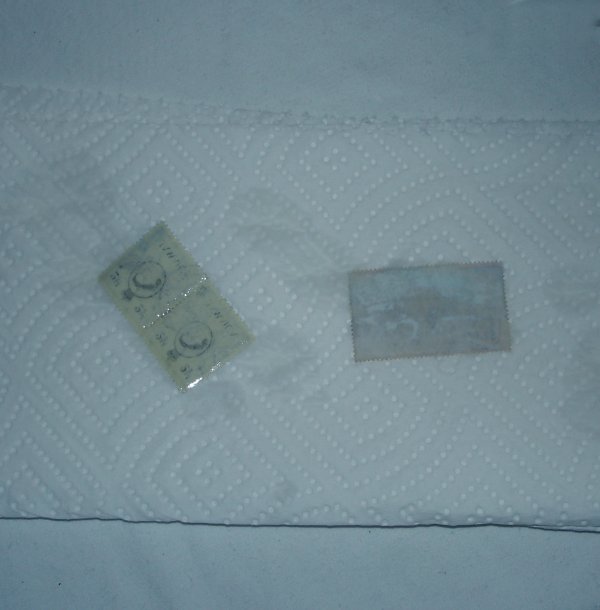Soaking stamps from envelopes or the paper they are attached to is one of the basic skills of any stamp collector.
The procedure is simple. Before beginning, determine if the stamp should be soaked.
Many stamps should be left on the envelope or paper they are attached to; this is especially true if the cancellation adds value.
Ask yourself if the envelope or cut square is adding context; how it was used, when it was used, where it was used. If it is then chances are good that the piece has greater value intact.
Also be aware that the stamps of some countries such as those of Netherland Indies may use fugitive inks.
Many modern self adhesive stamps should not be soaked, it is recommended that these are placed aside and dealt with separately.
Stamps on colored envelopes or paper should not be soaked together with other stamps; the colored ink will leach into the water and discolor the stamps themselves.
It is recommended that you soak stamp in small batches of 10-50 stamps. Trim the paper around the stamp; leave about 1/8” (0.3 cm) surrounding the stamp.
Prepare a bowl of warm water, the best bowl has plenty of surface area and an inch or two or water. While very hot water can help loosen stamps quicker, it runs the risk of issues with fugitive dyes.
Some folks will also add a drop of dishing washing liquid, but it is recommended that only clean, pure water be used for expensive stamps. Change water frequently, do not let water to become dirty.

1. Place stamps in the water. Using your tongs, press stamps under the water surface to ensure that the stamp become completely wet. Note that as stamp and paper become wet, they become more delicate. Handle wet stamps with great care.

2. Allow stamps to soak completely, the water must penetrate the fibers and soften the glue. Ideally the stamp will float free but a little manual persuasion may help. If the stamp resists coming off, allow it to soak longer.

3. Place loosened stamps in drying book or flat on a paper towel (face up). Allow stamps to dry completely; rushing the drying process will cause the stamp to curl. You can press a curled stamp between two heavy objects to flatten.
